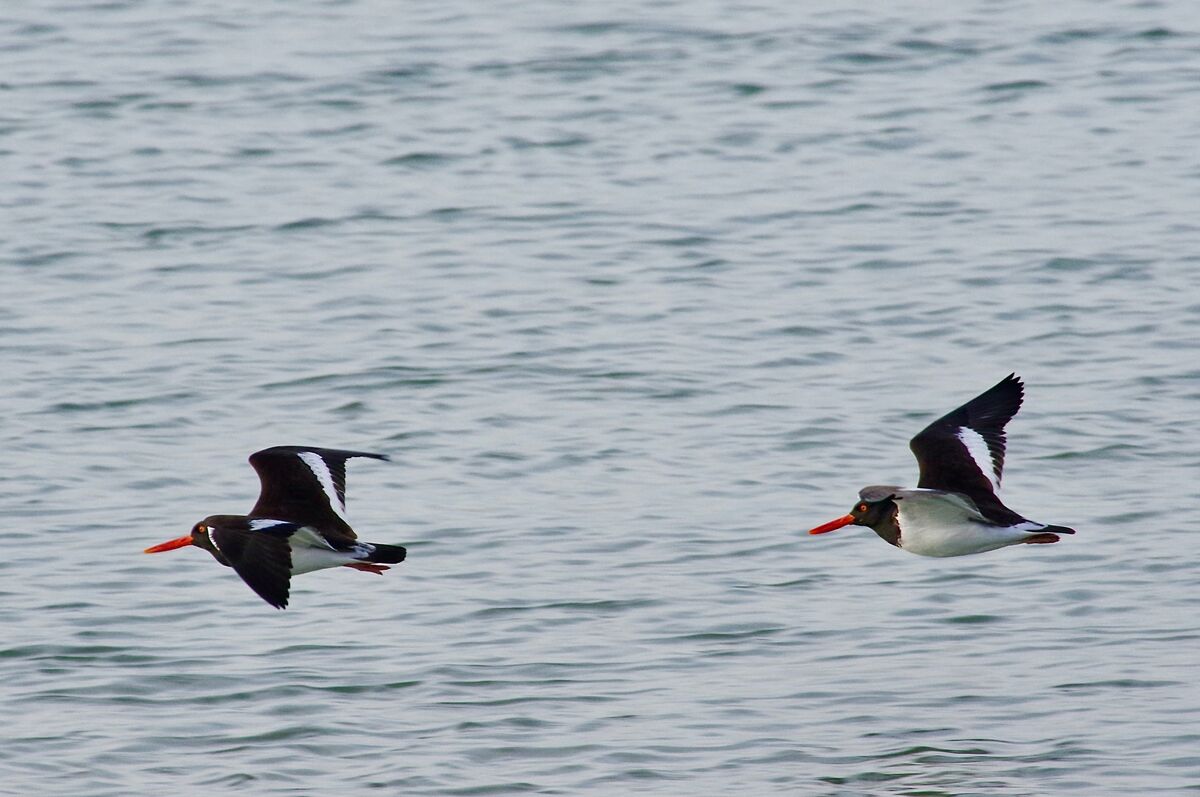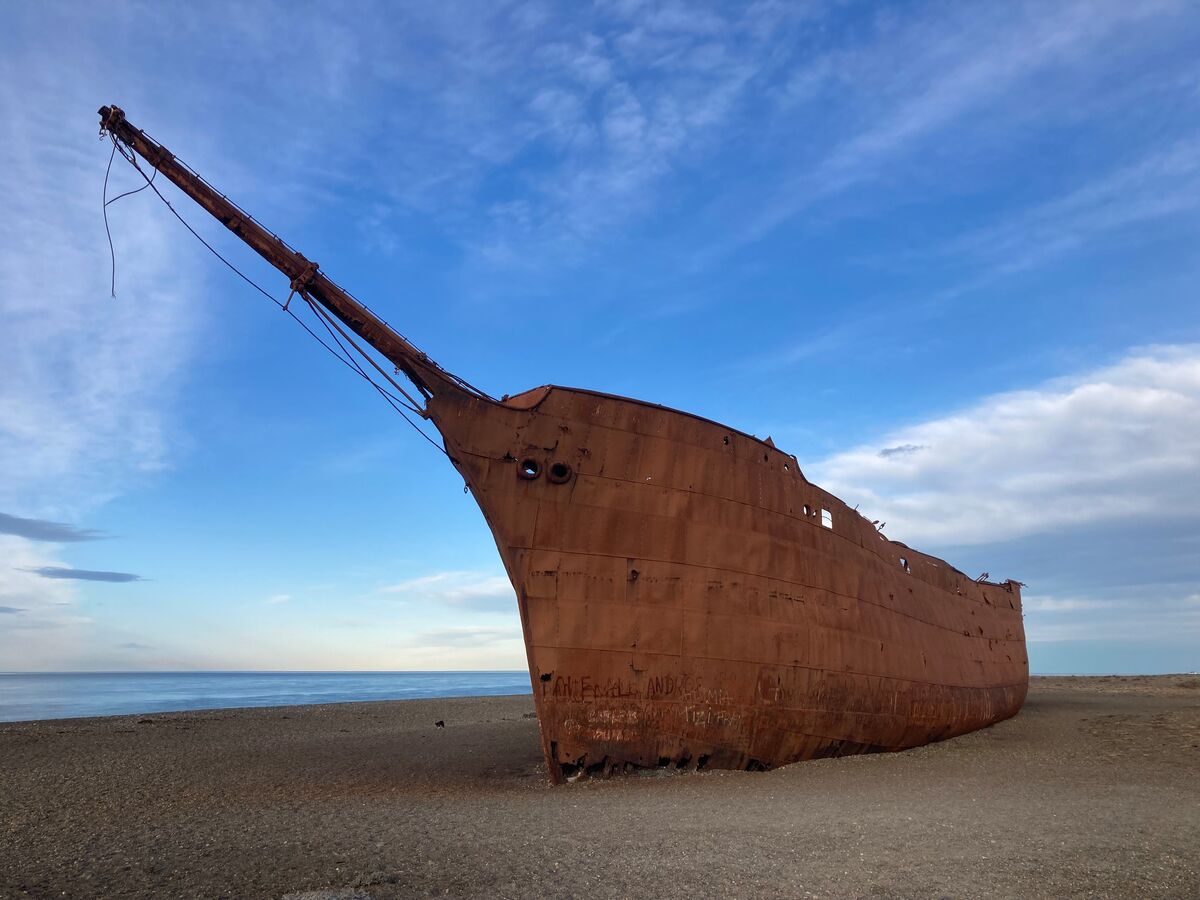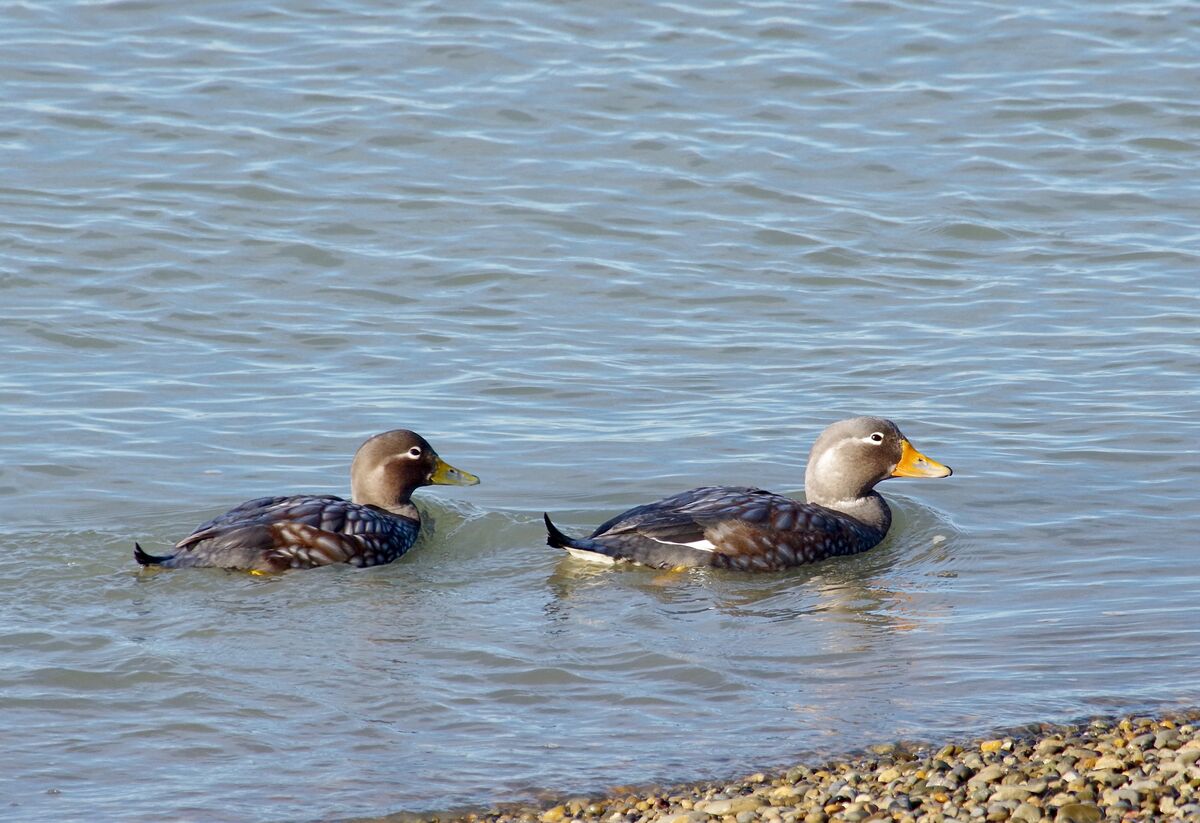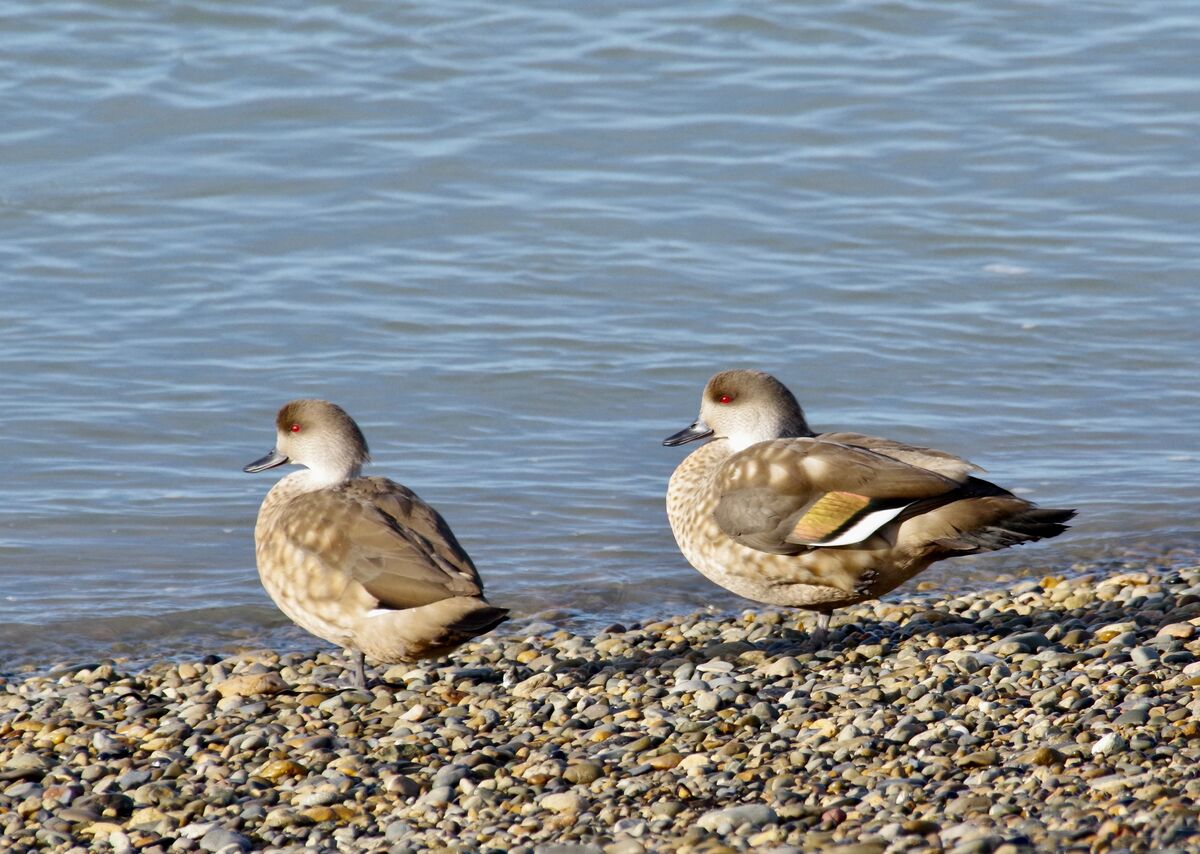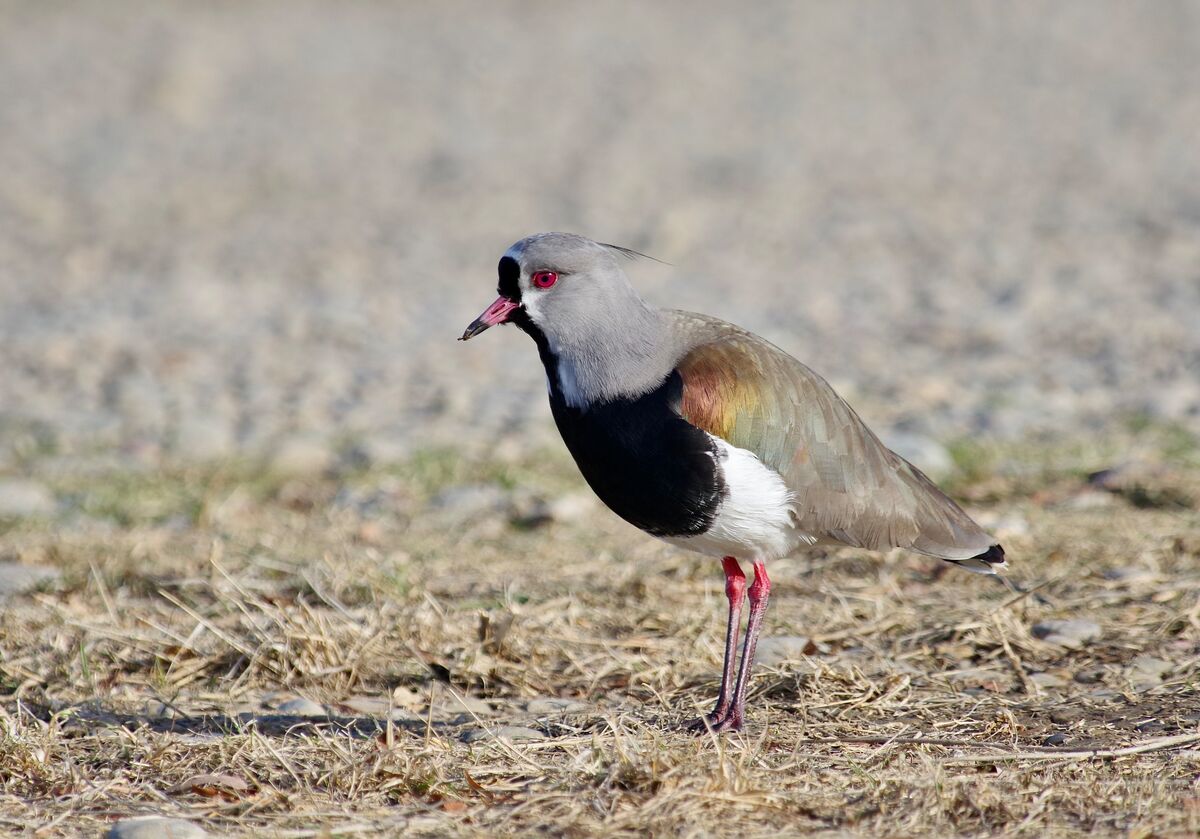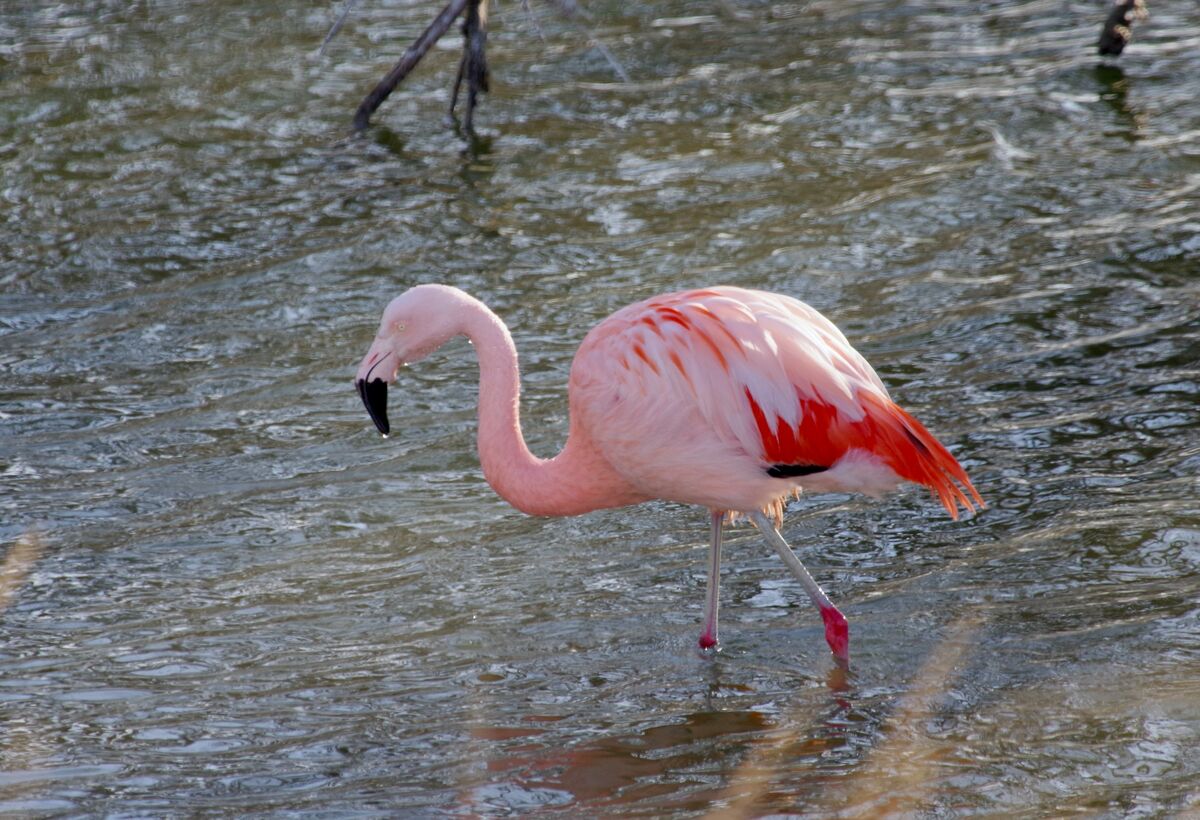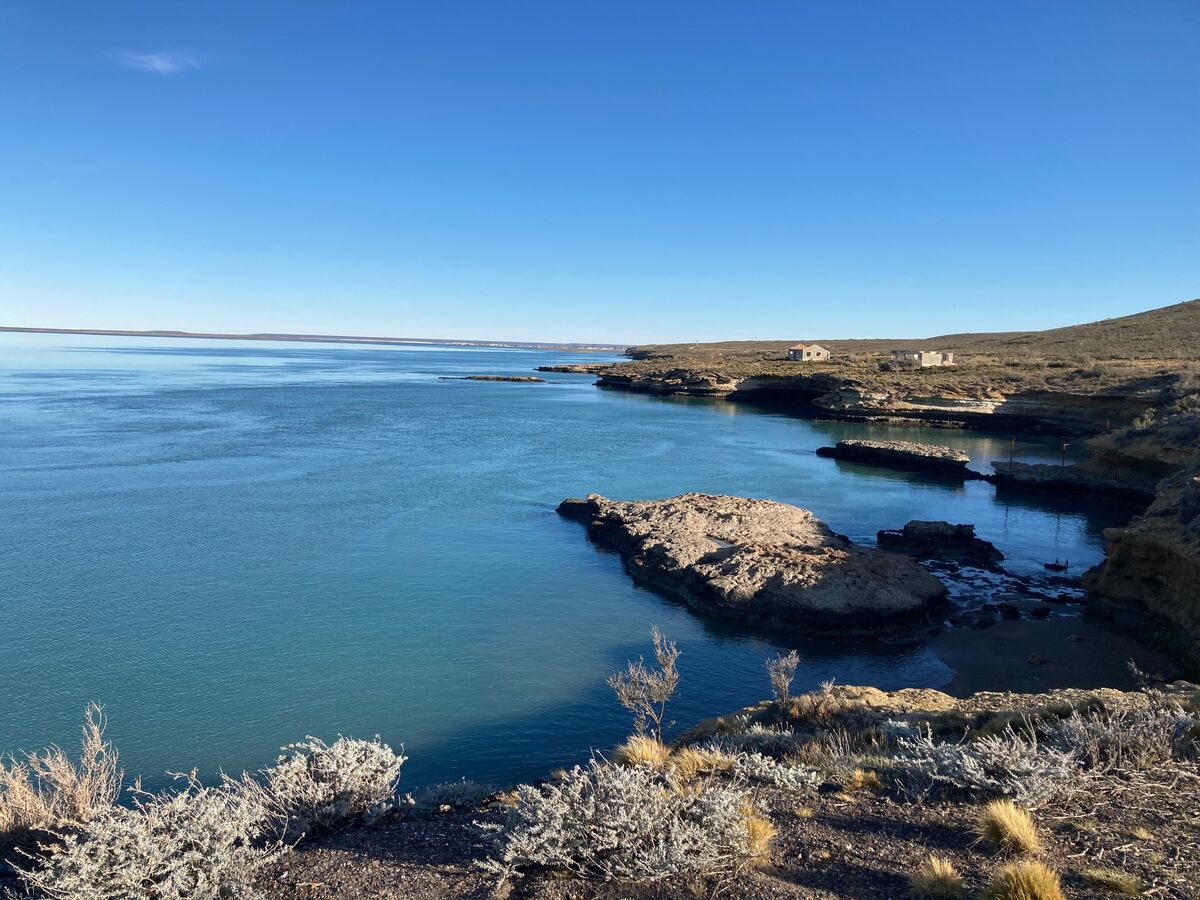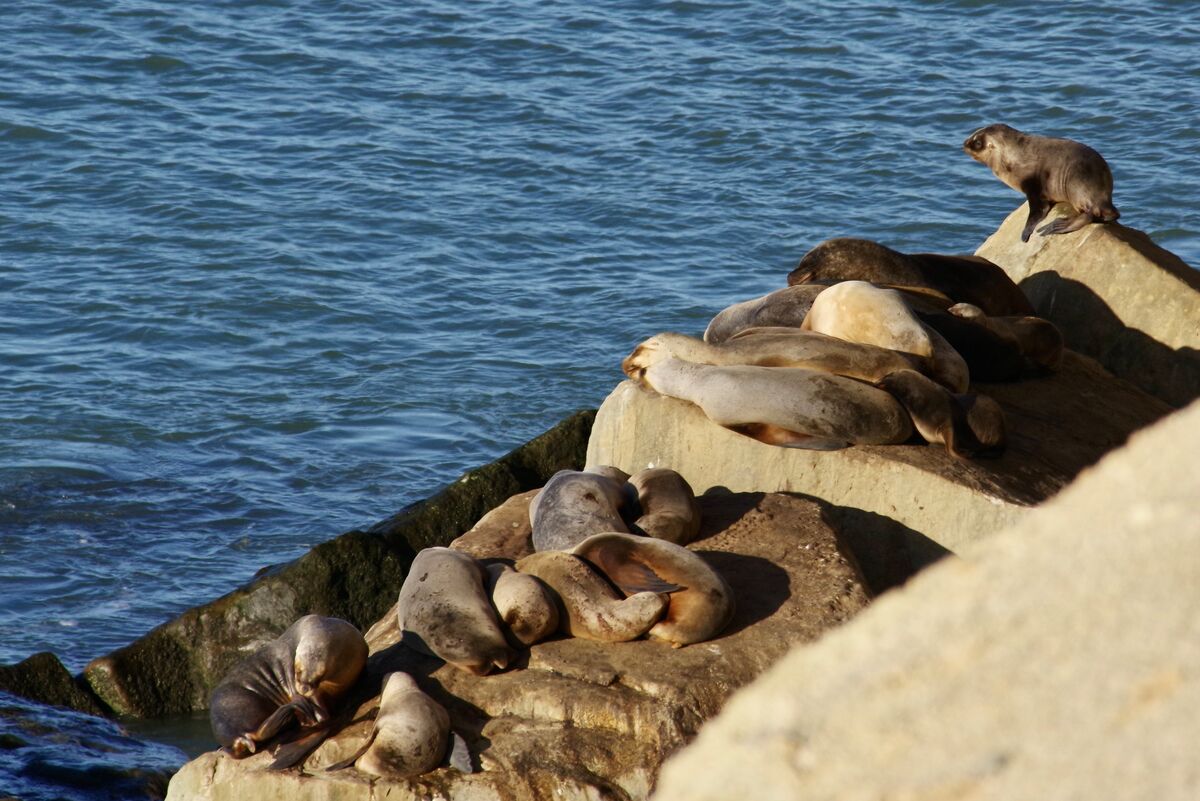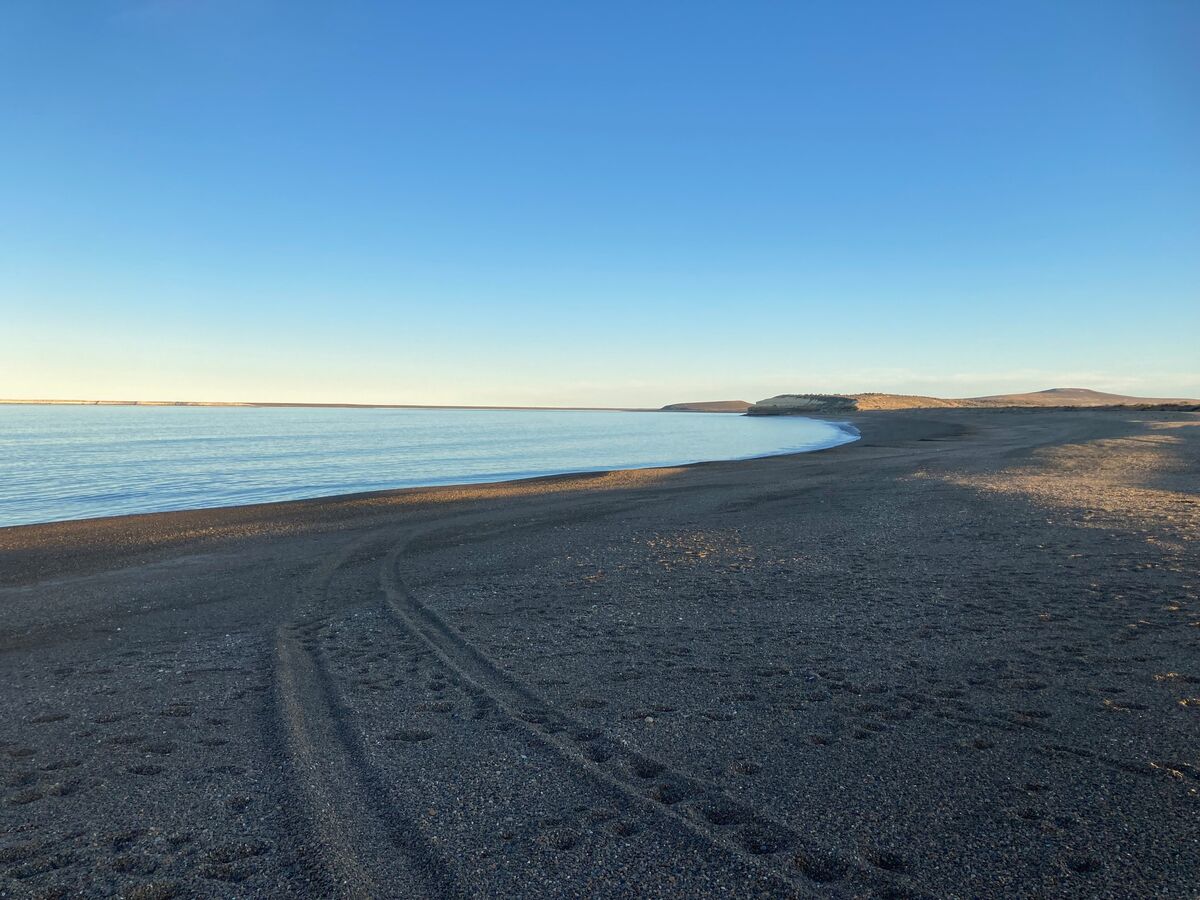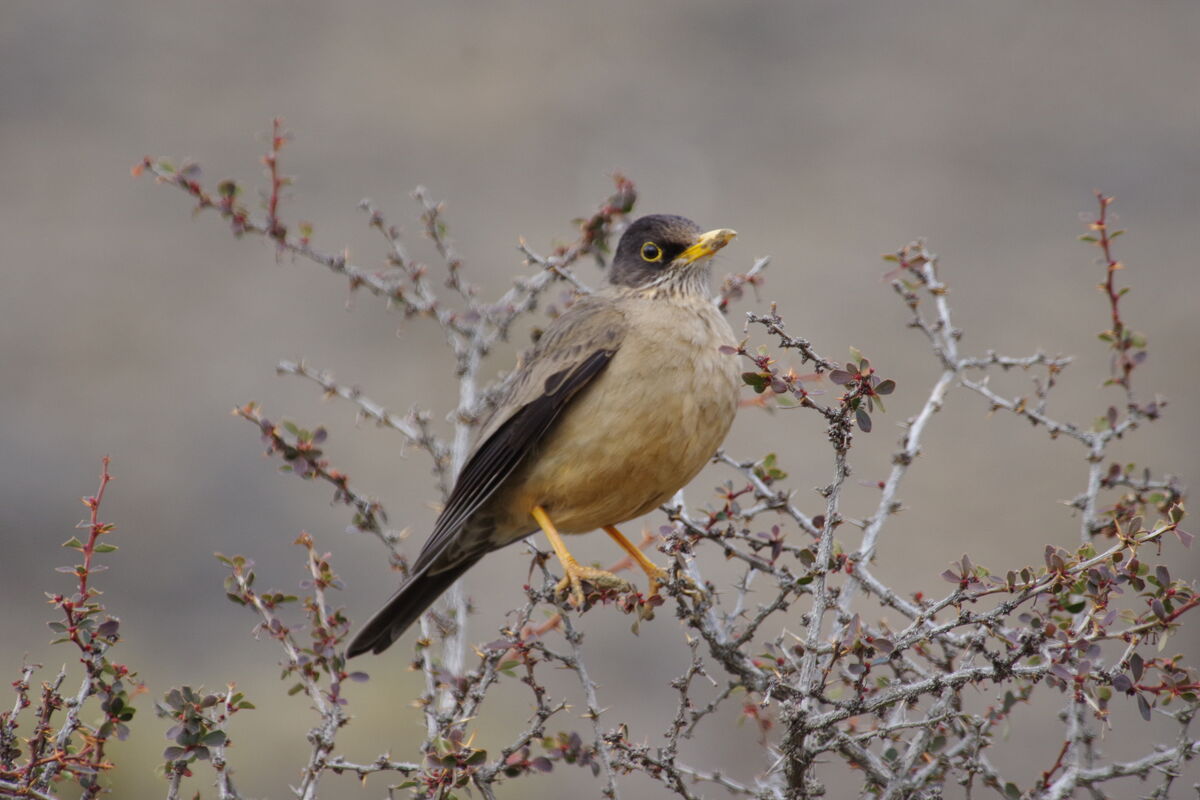Leif Rydell
Argentina part 3, Patagonian coast
Our last part of the trip was a 2,5 day trip down to Rio Gallegos in the far South East (not as far as Ushuaia) but just two hours drive from the Chilean border. The reason to go here is hardly because of the high presence of many species but the high value of the one possible to see. On my shorebird list I had 4 (5) new birds that normally should be decently easy to see. I only saw two, the two Oystercathers down here, the Magellanic and the Blackish. The number two bird on my most wanted birds, the unique Magellanic Plover was not seen which was deeply disappointing. Normally a flock of 20-50 birds winter here every year so I was more or less certain to see it. But no, there were not here. There was two flocks in the vicinity but one of these at a restricted area and the other a little bit too far away from our planned route. The other one I was hoping to see was the White-bellied Seedsnipe which is restricted to this part of the world but also these were not seen at the expected sites.
Anyway, our third guide Emanuel Tiberi, a local guy picked us up in the early afternoon and took us to his home so we could change some clothes and have a quick coffee. Emanuel knows the area and the birds well and did his best to give us a good birding moment.
We had seen the Rufous-chested Dotterel the first days but all these were in non breeding plumage so it was a good feeling to spot a few almost fully in their awesome summer plumage. Very common and very handsome, the Upland Goose where the male is the white one and the female reddish.
This was also the place where to expect the Magellanic Plovers but birds were few here. I was still happy to see my first Magellanic Oystercathers, which are pretty common down here. The "beaches" or maybe just call them shore lines are in a special way very impressive and "massive". This old wreck (of Marjory Glen a British coal boat which was abandoned here after an accident) is a famous symbol for this region.
Down here the sundrops rather quick at this time of the year and we needed to go to our lodging which was a nice private apartment Emanuel had arranged for us. Next day was a big driving day as we had to go 360 km north to San Julian. This trip was needed for some special bird here, for me the Blackish Oystercather but for many the highly endangered Hooded Grebe. This is one of the rarest birds in Argentina and a major part of the population winters here (Puerto Santa Cruz on the way). All too far out for a photo we still saw a good number of them. Looking at them we also spotted the special Flying Steamer Duck, a pair of Crested Ducks and a handsome Southern Lapwing.
Our trip continued north and driving in this vast and very flat nature was in a way a special experience. Not many birds seeing during this route but we saw our only Lesser Rheas from this road.
In the early afternoon we reached San Julian which is very famous for the place where Magellan first came ashore at this part of the world during his "world tour". I have hard to understand that this tiny ship made it at this time! This is a full scale replica. Close to the city we also saw a flock of Chilean Flamingos which gives a strong colour experience.
The major target here was to go a little bit further north to one of the only small colonies of Red-legged Cormorant. This is probably the most handsome one of this normally rather boring group. As we came closer we also stopped at an old industrial building where we saw this local Black-faced Siskin and had some great views of the shore line.
We arrived to the dramatic cliffs where the colonies of cormorants are as well as this colony of (Southern) Sea Lions.
I have a problem with hights, especially when there are nature cliffs which I don't trust the surface on but in some way I managed to lean forward enough for some photos. Happily we saw 6 Blackish Oystercathers (a little bit too far away for decent photos but still a proof memory)here as well as a rock with all three species of cormorants possible here. The Red-legged, The Imperial and the Magellanic.
A few more photos of the vey special landscape here.
We returned to San Julian where we had a good hotel and meal before crashing in to our beds. Next morning we went back south and made a few detours to look for the White-bellied Seedsnipe which was not seen. A new bird of the trip was this pair of Black-chested Buzzard Eagle posted at an antenna. Here we also had close views of the Austral Thrush.
Realizing the trip was coming to an end we drove down to the harbour not far from the airport. Normally at this time of the year it is quite windy which helps to see birds like Southern Fulmar and Black-browed Albatross. Totally calm for three days made these birds more or less impossible. Nicer just concerning weather but worse for birding. At least we had some good looks of swimming Magellanic Penguins (they don't come ashore during non breeding) and close looks at a gliding Southern Giant Petrel. A great journey had come to its end. During 15 days, we had now been visiting 3 different major sites and in total driven more than 4400 km. We had also seen 295 different species of birds as well as some unique mammals. Not an extremely high count for South America but some very special ones. Now just a flight back to Buenos Aires and a very long one back to Europe was in front of us. A lovely and in many ways complex country with great nature and a mix of different cultures.



